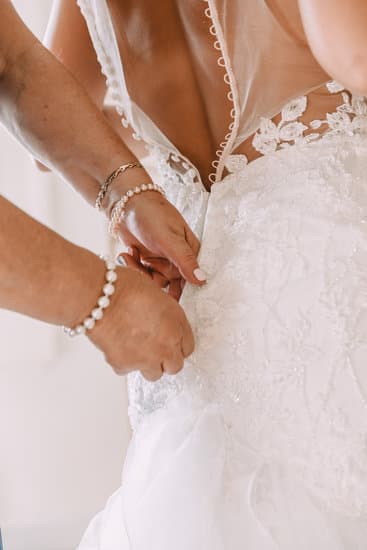Why is it important to know what hand and finger a wedding ring goes on? The symbolism and significance of a wedding ring extends beyond just being a piece of jewelry.
Different cultural and religious traditions have varying perspectives on which hand and finger a wedding ring is worn on, as well as the historical significance behind this tradition. This article will explore the reasons behind these customs and provide insight into the modern trends and personal preferences that influence where wedding rings are worn.
Understanding the cultural and religious perspectives regarding wedding ring placement is crucial for respecting traditions and honoring the symbolism behind the ring. From different countries to various faiths, there are distinct customs dictating which hand and finger should bear the wedding ring. By delving into these traditions, we can gain a deeper appreciation for the universal significance of this symbol of love and commitment.
The history of wedding rings dates back centuries, with origins deeply rooted in ancient customs and beliefs. As such, understanding how these customs have evolved over time is essential in appreciating their relevance in today’s society. Additionally, exploring the ongoing debate between wearing a wedding ring on the left hand versus the right hand provides insight into factors that influence this choice – whether they be cultural, personal, or symbolic in nature.
Cultural and Religious Perspectives
Different cultural and religious traditions around the world dictate where a wedding ring should be worn on the hand, often based on specific beliefs and customs. In some cultures, the right hand is considered more appropriate for wearing a wedding ring, while in others it is the left hand.
For example, in Western countries such as the United States and Canada, it is typical to wear the wedding ring on the left hand. On the other hand (pun intended), many Eastern European countries like Russia and Greece traditionally wear their wedding rings on their right hands.
Religious perspectives also play a significant role in determining which hand and finger a wedding ring is worn on. For instance, in Christian traditions, it is customary to wear the wedding ring on the left hand because it is believed that there is a vein that runs directly from the fourth finger of the left hand to the heart.
This tradition symbolizes love and commitment between partners. In contrast, in some Eastern cultures such as India, it is common to wear marriage rings on the right hand due to specific rituals and beliefs within Hinduism.
Furthermore, certain faiths have their own unique traditions regarding wedding rings. For example, Jewish weddings typically involve placing the wedding ring on the bride’s index finger during a ceremony known as “the giving of the ring.” This practice holds significant religious meaning within Jewish culture.
- Examples of cultural traditions:
- In Western countries like US and Canada: Left-hand
- In Eastern European countries like Russia and Greece: Right-hand
- In Hindu culture: Right-hand
- Religious perspectives:
- Christian tradition: Left-hand symbolizing love and commitment
- Jewish tradition: Placing ring on bride’s index finger during ceremony
History of Wedding Rings
Origins of the Tradition
The practice of exchanging rings as a symbol of commitment and love can be traced back to ancient Egypt, where reeds and hemp were fashioned into circles to signify eternity. The Romans later adopted this custom, using iron rings as a symbol of ownership over their spouse. Over time, the material used in creating these rings changed, with gold becoming the preferred choice due to its durability and scarcity.
Evolution of Customs
In the Christian tradition, it was not until the 9th century that the idea of placing the wedding ring on the left hand gained prominence, due to the belief that a vein from this finger led directly to the heart. However, in some Eastern European countries, it is still common to wear wedding rings on the right hand. This demonstrates how wedding ring customs have adapted and changed based on geographic location and cultural beliefs.
As society has modernized, so have attitudes towards wedding ring traditions. In recent years, there has been a shift towards non-traditional materials for wedding rings and an increased focus on personalization, with couples opting for unique designs or engravings that hold special meaning to them. It is clear that while certain traditions remain significant, individuals are also finding new ways to incorporate their own values and beliefs into the wearing of wedding rings.
Left or Right Hand?
The debate over which hand to wear a wedding ring on has been a topic of discussion for many years. While there is no absolute right or wrong answer, there are cultural, religious, and personal factors that influence this decision.
Cultural and Religious Considerations
In many Western countries, the tradition is to wear the wedding ring on the left hand. This custom can be traced back to ancient Roman beliefs that there was a vein in the fourth finger of the left hand that led directly to the heart, known as the “vena amoris” or vein of love. However, in some Eastern European countries such as Poland and Russia, it is customary to wear the wedding ring on the right hand.
Additionally, certain religions have specific guidelines for wearing wedding rings. For example, in Hindu tradition, it is customary for women to wear their wedding ring on their toe.
Factors Influencing the Decision
When deciding which hand to wear a wedding ring on, there are several factors that come into play. Personal preference and comfort are often important considerations. Some individuals may choose to wear their ring on their non-dominant hand to minimize potential damage from everyday activities. Others may base their decision on family or cultural traditions passed down through generations.
Modern Trends and Personal Preferences
With changing societal norms and evolving perspectives on marriage and relationships, some people have opted for non-traditional ways of wearing their wedding rings. This includes wearing multiple rings on different fingers or even choosing not to wear a traditional wedding ring at all. Ultimately, where one chooses to wear their wedding ring is a personal decision that may vary depending on individual circumstances.
Understanding the symbolism and history behind wearing a wedding ring can add depth and meaning to this cherished tradition. Regardless of whether it’s worn on the left or right hand or even which finger it adorns, a wedding ring symbolizes love, commitment, and unity between partners.
Ring Finger Significance
The ring finger has long been associated with love and commitment, making it the most popular choice for wearing a wedding ring. But what hand and finger is a wedding ring traditionally worn on?
In many Western cultures, including the United States and the United Kingdom, the wedding ring is typically worn on the left ring finger. This tradition can be traced back to ancient Egypt, where it was believed that a vein connected this finger directly to the heart, symbolizing love and commitment.
The significance of the ring finger in relation to love and commitment has deep roots in history and anatomy. The ancient Romans called this vein “vena amoris,” meaning “vein of love,” further solidifying the association between this finger and matters of the heart. Additionally, from an anatomical perspective, the ring finger is believed to have the least use compared to other fingers, symbolizing that it is reserved for something as important as a wedding ring.
While the tradition of wearing a wedding ring on the left ring finger is prevalent in many cultures, there are exceptions. For example, in countries like Russia and Greece, the wedding ring is traditionally worn on the right hand.
Furthermore, in some Eastern European cultures such as Poland and Ukraine, both men and women wear their wedding rings on their right hands during the ceremony and then switch them to their left hands after getting married. These variations demonstrate that cultural and personal preferences play a significant role in determining which hand and finger a wedding ring is worn on.
Modern Trends and Personal Preferences
In today’s diverse and ever-changing society, wedding ring traditions have undergone a transformation. Many couples are opting for non-traditional ways of wearing their wedding rings, influenced by personal preferences and lifestyle choices. While the traditional placement of a wedding ring has been on the left hand ring finger, modern trends have seen an increase in variation.
One contemporary trend is wearing the wedding ring on the right hand. This practice is more common in countries such as Russia, Greece, and Colombia where the right hand is considered to be more dominant or significant. Additionally, some individuals simply prefer to wear their wedding ring on their right hand due to comfort or aesthetic reasons.
Non-traditional placements of wedding rings include wearing it on different fingers or even as a necklace or bracelet. Some may choose to engrave their partner’s name or initials inside the band, adding a personal touch to this timeless tradition.
The evolution of modern trends also extends to same-sex couples, who face unique considerations regarding which hand and finger to wear their wedding rings on. With changing societal norms, many same-sex couples are redefining traditional practices when it comes to marriage symbolism. It is important for these couples to understand the cultural and historical significance of wedding ring placement while embracing their own personal preferences and identities.
| Modern Trends | Examples |
|---|---|
| Wearing wedding ring on right hand | Russia, Greece, Colombia |
| Non-traditional placements | Different fingers, necklace, bracelet |
| Same-Sex Couples | Redefining traditional practices |
Same-Sex Wedding Ring Etiquette
When it comes to same-sex wedding ring etiquette, there are a few considerations to take into account. For many years, the tradition of wearing a wedding ring on a specific hand and finger has been deeply ingrained in various cultures and religions. However, for same-sex couples, there may be some uncertainty about which hand and finger the wedding ring should be worn on.
One key consideration for same-sex couples is whether to follow traditional customs or create their own unique traditions. Some couples may choose to adhere to the cultural and religious norms of their respective backgrounds, while others may opt for a more personalized approach to wearing their wedding rings.
In some cases, couples may decide to wear their wedding rings on the same hand and finger as their partner, as a symbol of unity and equality within their relationship. This is a modern trend that reflects the evolving nature of marriage and relationships in today’s society.
Ultimately, the decision of which hand and finger to wear a wedding ring on is a deeply personal one for all couples, regardless of sexual orientation. It’s important for each couple to consider their own cultural background, personal preferences, and the significance of the tradition itself when making this decision.
Conclusion
In conclusion, the debate about what hand and finger a wedding ring goes on is as old as the tradition of exchanging rings itself. From cultural and religious perspectives to historical origins and modern trends, the placement of the wedding ring holds deep significance and symbolism for couples around the world.
While different cultures and faiths may have specific traditions regarding which hand and finger a wedding ring is worn on, the universal symbolism of love, commitment, and partnership remains constant. Whether it’s on the left hand or the right hand, the ring finger holds a special place in history and anatomy as a symbol of love and connection.
Ultimately, individual preferences and personal lifestyle play a significant role in determining where a wedding ring is worn. Modern trends have seen non-traditional ways of wearing wedding rings emerge, reflecting changing attitudes towards marriage and partnership. Furthermore, considerations for same-sex couples highlight the evolving nature of wedding ring etiquette in today’s society.
Regardless of cultural or personal choices, what matters most is that each couple cherishes the symbolism behind their wedding rings. It serves as a reminder of their commitment to one another, regardless of where it is worn on their hand. The universal importance and significance of the wedding ring remain unwavering amidst differing traditions and customs.
Frequently Asked Questions
Do I Wear My Wedding Ring on My Right or Left Hand?
Traditionally, in the United States and most Western countries, wedding rings are worn on the left hand. This custom dates back to ancient times when it was believed that a vein in the “ring finger” on the left hand led directly to the heart.
Is the Ring Finger on the Left or Right Hand?
The ring finger for both men and women is located on the left hand. In many cultures, this finger is specifically designated as the one for wearing wedding bands or engagement rings due to its association with love and commitment.
Which Is a Man’s Wedding Finger?
For men, the wedding ring is typically worn on the same finger as women – the ring finger on the left hand. While some cultures have different customs, in Western countries it’s common for both partners to wear their wedding bands on their left ring fingers as a symbol of their union.

I have been involved in marriages for over 20 years helping couples and singles understand more about them.





